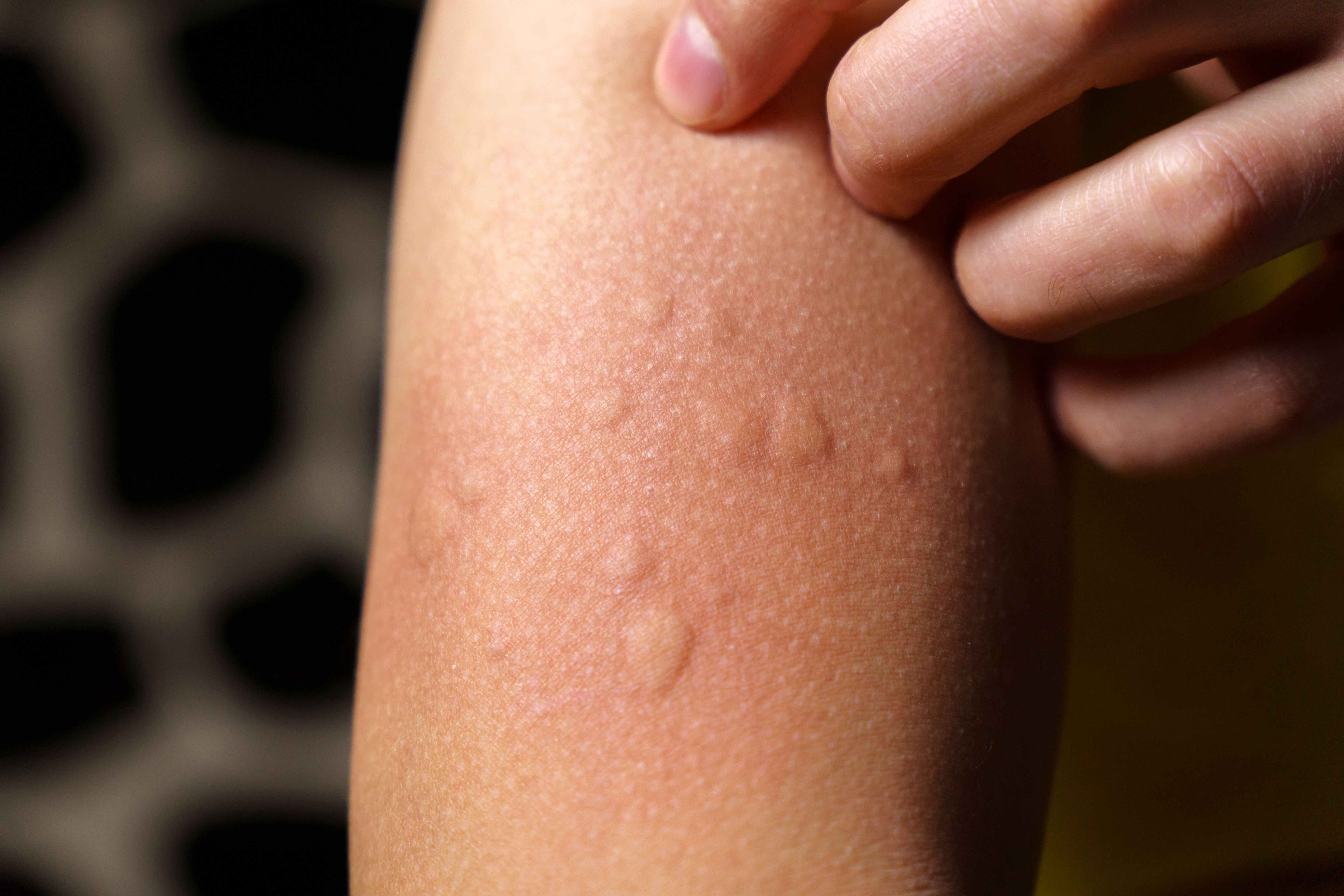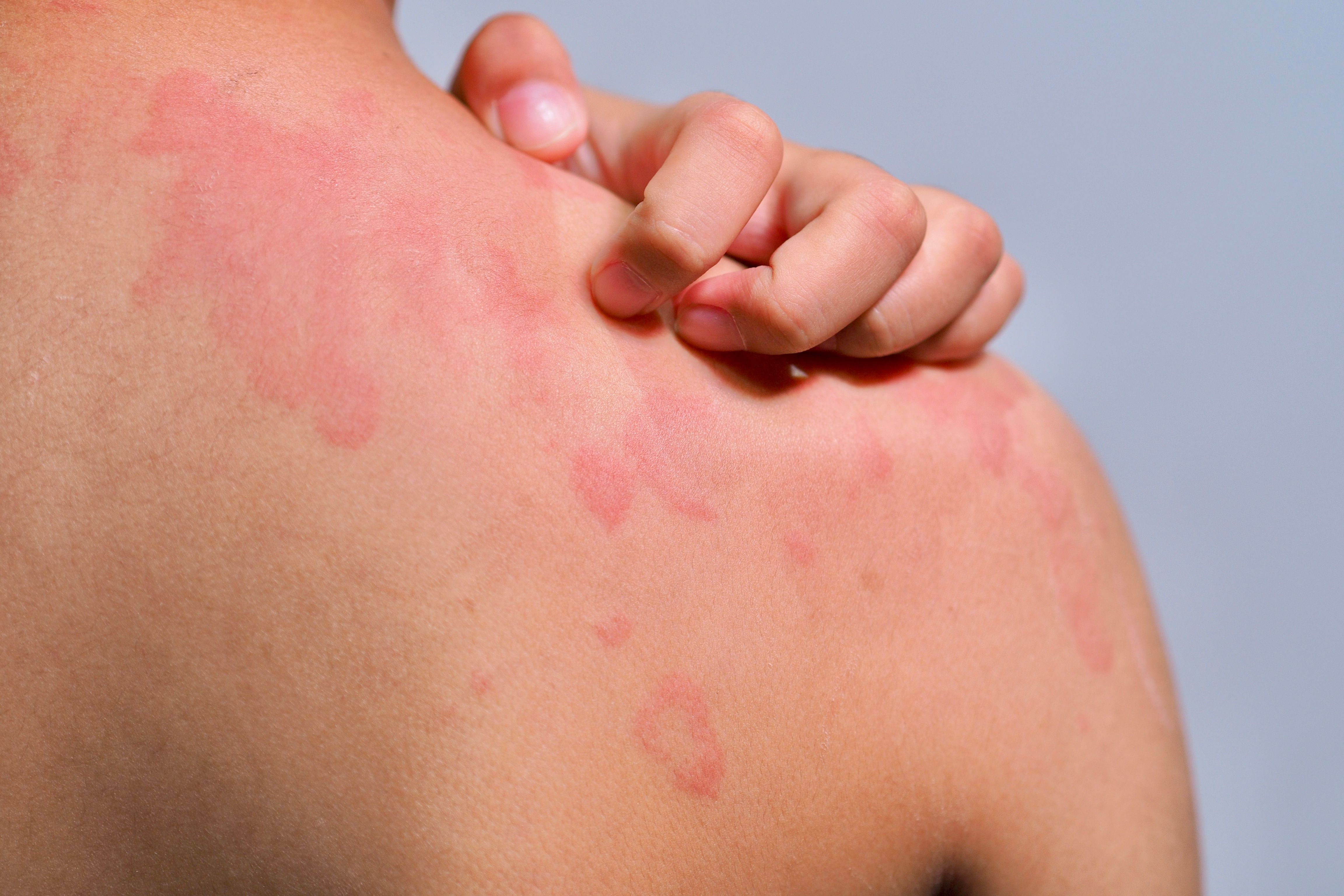News
Article
Dupilumab Treatment for Patients With CSU: Insights From Jason Hawkes, MD, MS
Author(s):
Key Takeaways
- Dupilumab shows significant efficacy in reducing itch and hives in CSU patients unresponsive to antihistamines.
- The CUPID A and CUPID C trials reported a two-thirds reduction in itch and urticaria activity scores at week 24.
Jason Hawkes, MD, MS, provided an in-depth look at the potential role of dupilumab (Dupixent; Sanofi and Regeneron Pharmaceuticals) in the management of chronic spontaneous urticaria (CSU), a condition with limited therapeutic options over the past decade.
Jason Hawkes, MD, MS, provided an in-depth look at the potential role of dupilumab (Dupixent; Sanofi and Regeneron Pharmaceuticals) in the management of chronic spontaneous urticaria (CSU), a condition with limited therapeutic options over the past decade. | Image Credit: Semi - stock.adobe.com

This article originally appeared on Dermatology Times®.
Dupilumab (Dupixent; Sanofi and Regeneron Pharmaceuticals) is showing promising results in clinical trials for chronic spontaneous urticaria (CSU) by significantly reducing itch and hives, offering a well-tolerated and potentially effective option for patients who haven't responded to traditional treatments, according to Jason Hawkes, MD, MS, dermatologist at Oregon Medical Research Center, during a recent interview with Dermatology Times.
“The Dupixent clinical trial program had 2 major pivotal trials—CUPID A and CUPID C. These were studies looking at biologic-naive patients…[who] were not responsive, or had inadequate responses to antihistamines,” Hawkes explained.
Patients with CSU often experience underdiagnosis or misattributed symptoms of allergies, creating a misconception that contributes to delayed or inadequate treatment methods. Dupilumab has gained FDA approval for several type 2 inflammatory diseases like atopic dermatitis and asthma and has demonstrated benefit among recent trials for CSU.
The trials primarily assessed the reduction in itch severity score and urticaria activity score among patients at week 24. “We found in those 2 trials… about two-thirds reduction in itch scores and also in their urticaria activity score,” Hawkes stated. “About one-third of patients actually had a complete response where they weren’t having really any itch or hives.”
Hawkes highlighted the significance of expanding dermatologists’ role as primary managers of CSU. “Dermatology specialists are well familiar with [dupilumab]... now they have a familiar therapy for a disease that they know how to recognize but weren’t historically treating. It can be difficult to find an allergist… [but] by working with allergy, we can expand access with a therapy that’s been tried and true in multiple indications.”
Some clinicians and patients experience barriers created by safety concerns associated with existing biologic treatments like omalizumab, including rare but serious reactions such as anaphylaxis. In contrast, dupilumab’s safety profile is well established. “Dupixent comes into this landscape…with a very good safety record. It has, in some indications, approval down to even 6 months of age,” Hawkes ensured.
Dupilumab may also benefit patients with multiple coexisting conditions, beyond its targeted efficacy. “Some of these patients who come in with CSU also have other type 2–mediated diseases,” Hawkes noted. “Here’s a therapy that we may want to start with right from the beginning, because…you may actually get benefit [in] some of these other conditions.”
For Hawkes, the advent of an additional treatment option carries personal and professional significance. “It definitely gives [clinicians] confidence because we have other options,” he said. “We want to have those options for patients so that helps the provider…and it gives [patients] hope that they’re not stuck with this disease.”
As the dermatology community awaits regulatory decisions, the momentum for dupilumab represents not just a new treatment but a potential paradigm shift in how CSU is managed, while expanding the roles of dermatologists, improving access, and enhancing patient outcomes with precision-guided care.
The potential FDA approval of dupilumab for CSU could also stimulate further research and subtyping within the disease. “We’ve uncovered a couple of specific disease mechanisms in CSU, particularly the type 1 immunity, which is IgE-dependent, and the type 2B process, where it’s IgE-independent,” Hawkes explained. “With these different selective therapies, we can start to tease out subgroups within the bigger umbrella of CSU.”





